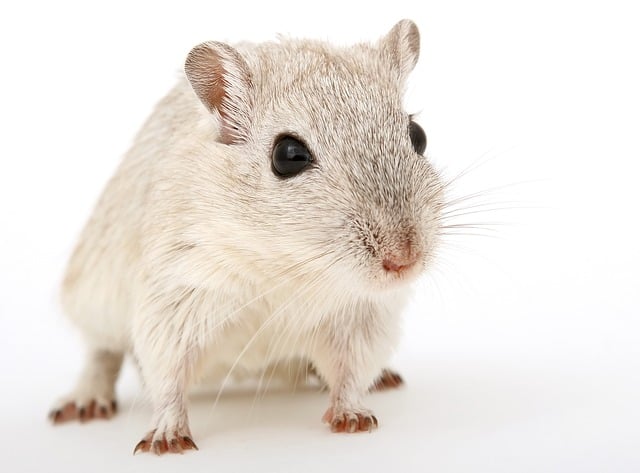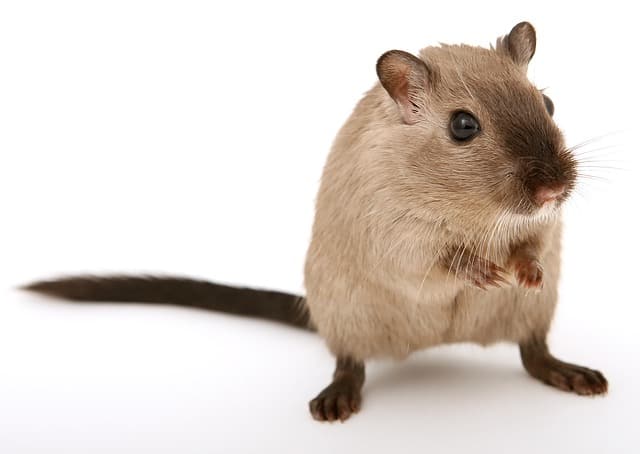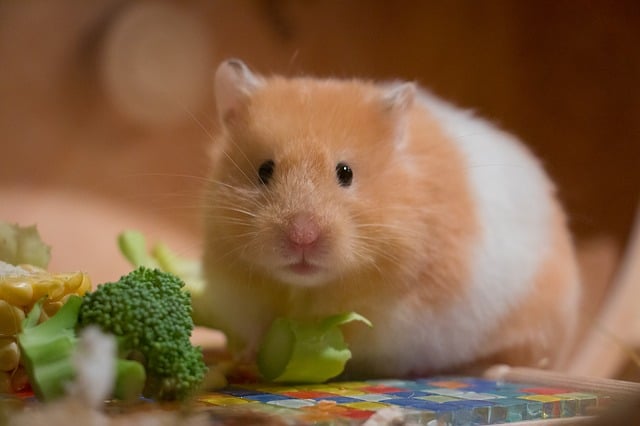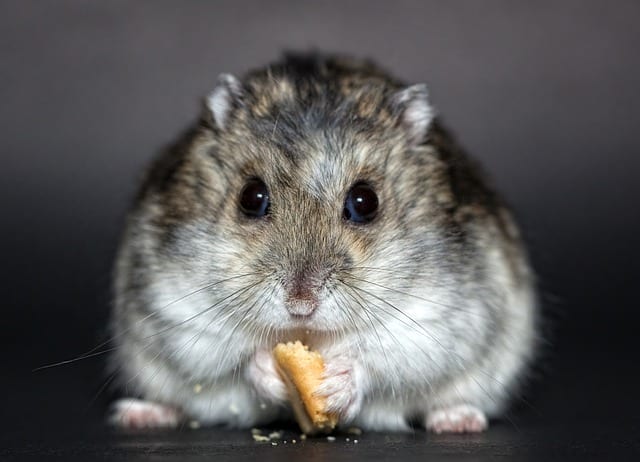
For generations, house owners kept hamsters and gerbils as pets, and their popularity has grown to the extent that they are now among the most popular pets available. The populace might forgive you for believing there isn’t much of a difference between them. After all, they are both compact and come in various colors.
Table of Contents
But how dissimilar are they? There are a few notable variances in their features. But that’s not all; they also have different temperaments, with one preferring to live in groups and the other not. Here, we’ll look at their differences and learn how to spot them.
Gerbils

There are approximately 90 species of gerbils. However, the ones offered in stores are almost undoubtedly Mongolian gerbils. These hamster relatives do not enjoy being alone and prefer to live in groups of up to 20 people in their native habitat.
A caged gerbil will get depressed if maintained in an isolated environment. If you want to adopt gerbils, two males or two females from the same family will connect. Gerbils, like hamsters, are generally nocturnal but take a series of naps during the day. Thus, it is not str to see them active during the day.
Their nutritional and housing requirements are the same as those of hamsters, except gerbils should have a solid exercise wheel because their long tails can become entangled in wire wheels. Hamsters and gerbils should not be allowed to get too chilly, or they will go into hibernation. Gerbils have a lifespan of roughly five years.
Hamsters

Hamsters are nocturnal and prefer to be alone in their native habitat, so bonding with humans might be difficult because they do not like to be awakened during the day. However, the evenings and early mornings are ideal times to make new friends.
A 2-foot-square wire-mesh cage with a sturdy base is the minimal size for a house for one hamster, but keeping more hamsters in a tight space will undoubtedly result in a deadly struggle.
Those brightly colored plastic cages may be appealing, but they are difficult to clean, and hamsters may chew their way out. It requires getting a water bottle, nonwood-based bedding such as straw or shredded white paper, chew toys, and an exercise wheel.
Toilet paper rolls and wooden ladders are also excellent toys. A hamster’s food should include a mix of greens, fruits, and seeds, some of which are available in hamster or bird-specific containers. Because their teeth never stop growing, these animals must be fed hard, digestible foods such as dog biscuits and clean tree branches. Hamsters have a life span of 2 to 4 years.
Gerbil vs hamster (Key difference)

There are around 20 species of hamsters and over 100 species of gerbils living today. Although there are numerous gerbil species, only two are maintained as pets: the Mongolian gerbil and fat-tailed gerbils. It’s easy to mix up hamsters with gerbils, especially given the differences between the two species. Despite this, they are nevertheless distinct in many respects.
Face

Gerbils have a long nose and narrow face, similar to a rat rather than a hamster. They also lack the hamster’s famed cheek pouches. On the other hand, Gerbils take food back to their nest region even though they lack cheek pouches to store food in.
Hamsters have a round face with a short, blunt nose and distinguishing cheek pouches. These pouches are pockets that may stretch back to their shoulders, usually for storing and transporting food. Hamsters in the wild use their pouches to transport food back to their nest area.
Body

Gerbils have long, slim bodies that are streamlined in shape. They are also incredibly agile because of their long, muscular hind legs and huge feet. As a result, it’s not uncommon to witness a gerbil jumping around and generally acting acrobatic.
Hamsters’ bodies, like their faces, are small and spherical, giving them the appearance of being a cute ball of fluff. Hamsters also have short legs, making them less agile than gerbils.
Tail

The tails of hamsters and gerbils are one of the most striking differences. Gerbils have lengthy tails around 4 inches long, which is about the same length as their bodies. Some gerbil species have hairy tails, while others are bald.
The tails of Mongolian gerbils are hairy, whereas the tails of fat-tailed gerbils are bald. As the name implies, fat-tailed gerbils have a substantially fatter tail than other gerbils, making them easier to identify.
Hamsters have small tails that are short and stubby and usually less than one inch long, distinguishing them from gerbils. The Chinese hamster is an exception to the rule, as it has a long tail that is nearly the same length as the whole body.
Temperament

One of the most critical differences between hamsters and gerbils is their temperaments and social tendencies. Hamsters are most active at night. They are also solitary animals who do not tolerate sharing their space with others; thus, they are typically kept alone as pets.
When others attack their domain, hamsters have a habit of fighting to the death. Despite their territorial nature with other hamsters, hamsters are typically highly placid. They are generally friendly with humans, though they can occasionally bite, especially when shocked or seeking something edible.
On the other hand, Gerbils are most active during the day and can live peacefully in a pair or group. They have a curious and pleasant attitude, are quite gregarious, and are very active most of the time. They are generally friendly to humans and are not prone to biting even when handled.
Health and fitness
Like any other rodent, hamsters and gerbils can carry rabies and other diseases and, if released into the wild, constitute a threat to established ecosystems. Some countries do not allow owners to rear the two pets as companions.
Adoption
Yes, hamsters and gerbils are adorable. They do, however, require suitable shelter, food, temperature, and exercise and prefer to be alone or with their species.
They are capable of biting and transmitting diseases. They are not suitable as “starter pets” for young children. If you are confident that you want to bring these delicate creatures into your house after carefully considering these factors, avoid pet stores and instead adopt from a shelter or rescue organization.
Sleeping habits
Because hamsters are nocturnal, they spend most of the day sleeping. While you’re attempting to sleep, you might hear them shuffle around, dig in their cage, or run on the wheel. On the other hand, Gerbils are diurnal, which means they are awake and active all day. They’ll be up for some playtime during the day if you’re out and about.
Socialization requirements

Gerbils band together in the wild. Adopting a solitary gerbil may lead to depression in the long run. To avoid loneliness, make sure your gerbil has a companion. Adopting gerbils while they are young allows them to bond spontaneously and become accustomed to each other from the start—purchase gerbils of the same sex to avoid reproducing.
Hamsters are very content on their own, though having two or more is not a bad thing. You should buy two of the same sex as you would gerbils. Female hamsters are more aggressive when kept together, so two males may be a better option.
Housing
Both the gerbil and the hamster have unique housing needs when these requirements are met, your chances of having a healthy gerbil or hamster pet increase dramatically!
Cages for gerbils
Gerbils are born diggers, chewers, and explorers. They have powerful hind legs and long tails that help them balance when jumping, and they are pretty active and exciting!
As a gerbil owner, this means that you are in desperate need of gerbil-proof housing. A glass tank ,plastic or a metal habitat with a smooth bottom are the only safe options. Gerbils have a natural need to dig and chew, and if the owners do not address this, they can become rather unhappy. Gerbils require a lot of bedding to dig and nest in.
The size of your gerbil cage should correspond to the number of inmates. HSUS body recommends a 10-gallon tank for two gerbils. For every additional gerbil, add 5 liters.
Cages for hamsters

The size of your hamster’s cage should be proportional to the species of hamster and the number of residents.
Hamsters, like gerbils, also like to chew, dig, and climb. They do not, however, jump. Your hamster, like gerbils, will require a robust, escape-proof home, which is especially vital when maintaining dwarf hamsters!
The best options are plastic, glass, or metal cages with smooth bottoms.
10 gallons is suitable for a single dwarf hamster, though the bigger, the better. The minimum size for a single Syrian hamster is 15 liters, but it is ideal to get a bigger size.
Lifespan
Unfortunately, neither critter lives very long. Gerbils live an average of three years longer than hamsters. Both species have lived for longer than four years in some cases, but this is unusual.
You may only have a few years with your hamster or gerbil, but caring for these tiny critters will be a wonderful experience you will remember for years.
